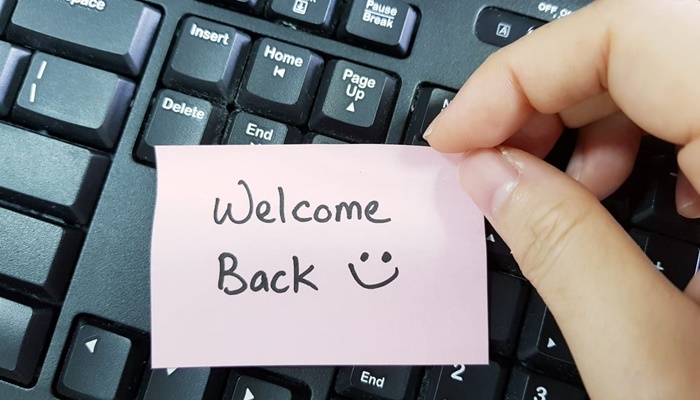The five-day, forty-hour work week, long considered the standard, is no longer the sole model for success. In the face of a global push for better work-life balance, companies worldwide are experimenting with diverse work-culture models, each offering unique trade-offs and potential for revolutionizing how and where we work. From condensed weeks to unlimited vacation, organizations are trying to find the perfect formula for productivity, employee well-being, and sustained growth.
Making the Case for Condensed Productivity
The most prominent contender to the traditional model is the four-day, 32-hour work week. This model, which condenses the standard workload into fewer days while protecting employee pay, has moved from a fringe idea to a widely-studied phenomenon. Landmark trials in places like Iceland and the UK, as well as companies like New Zealand’s Perpetual Guardian, have shown compelling results.
These trials consistently report sustained or even slightly improved productivity. Companies discover that a clear incentive, that extra day off helps employees become more focused and efficient during their working hours. The benefits extend far beyond the balance sheet. Research indicates significant drops in employee burnout, with better sleep, reduced stress, and an improved sense of work-life balance. For companies, this translates into a powerful recruitment and retention tool, as it becomes a highly sought-after perk.
However, the four-day week is not a one-size-fits-all solution. Implementation challenges are common. Industries that require constant customer-facing continuity, such as retail or healthcare, must carefully manage staffing and shift rotations to avoid service gaps. It also necessitates a fundamental change in managerial mindset, shifting from supervising hours to trusting employees to deliver outcomes. The model’s success often hinges on a company’s willingness to redesign work processes deliberately and thoughtfully.
The 9-9-6 is a High-Intensity, High Risk Model
On the opposite end of the spectrum is China’s intensive 9-9-6 model, which requires employees to work from 9 a.m. to 9 p.m., six days a week. This grueling schedule became a hallmark of the country’s booming tech sector, driving rapid output and hyper-growth during a period of immense expansion. The philosophy behind it is that extreme hours equate to extreme results.
However, the human cost of this model has become impossible to ignore. The 9-9-6 model is a clear and unequivocal no-no. It is linked to serious health harms, including severe burnout, mental health issues, and, in some tragic cases, even sudden death from overwork. A grassroots protest movement, 996.ICU, emerged to highlight the exploitative nature of the schedule, signaling a major cultural shift and a pushback from a new generation of workers.
Empirical research has further exposed the fallacy of this model. Studies consistently tie long working hours to a decline in self-rated health, higher burnout, and crucially, diminishing returns from extreme hours. After a certain point, cognitive performance per hour plummets, meaning employees become less effective and more prone to errors, which ultimately harms long-term productivity and innovation. This model is a short-sighted and unsustainable path that prioritizes immediate, and often superficial, growth over the health and well-being of the workforce.
The Hybrid and ROWE Models Offer a Middle Ground and Ultimate Flexibility
As a middle path, many organizations have settled on a hybrid model, often requiring employees to be in the office for a few days a week, such as three days. This approach aims to capture the benefits of both in-person collaboration and remote-work flexibility. When implemented well, it can significantly boost retention and preserve productivity by allowing employees to manage their work and personal lives more effectively.
However, hybrid work is not without its pitfalls. Poor implementation can lead to a weakened sense of team culture and collaboration, meeting overload, and a perceived “career penalty” for those who choose to work from home on flexible days. The most successful hybrid policies are team-tailored and outcomes-focused, giving individual teams the autonomy to decide what schedule works best for them, rather than enforcing a top-down mandate.
A more radical version of this is the Results-Only Work Environment (ROWE). This model completely removes time and location constraints, focusing solely on the work delivered. Alongside this, many companies offer unlimited PTO (Paid Time Off). When successful, ROWE can raise employee autonomy, reduce turnover, and focus teams on meaningful outcomes. The key to its success, however, lies in having clear metrics, strong managerial trust, and a culture that values output over presence. Best Buy’s early experiment with ROWE showed significant gains but also a later cultural reversal, which is a powerful warning about the fragility of such models.
Similarly, while unlimited PTO sounds appealing, it often leads to employees taking equal or even fewer days off than with traditional systems. This is due to a lack of clear social norms and a fear of being perceived as uncommitted. The most successful unlimited PTO policies often establish minimum vacation requirements or strong managerial encouragement to ensure employees actually take a break and avoid burnout.
There is No Universal Winner
The landscape of modern work models is a testament to the fact that there is no universal winner. The 9-9-6 model is a dangerous exception, but the other models each have their unique set of trade-offs, and what works for one organization might fail spectacularly for another. The four-day week and outcomes-based models, for example, tend to improve well-being and retention but require a deep commitment to work redesign.
The most successful organizations are those that don’t simply adopt a new model, but deliberately choose by task type, customer needs, and measured piloting. They understand that work culture is not a rigid policy but a living, evolving system that must be constantly evaluated. The future of work will likely not be defined by a single model but by a diverse spectrum of agile, human-centric approaches that prioritize well-being and productivity in equal measure.


















